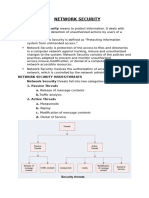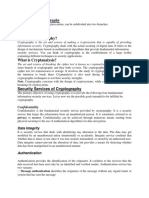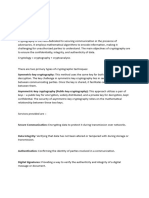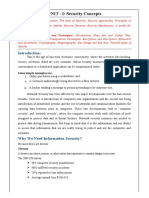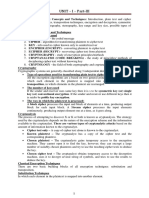0% found this document useful (0 votes)
13 views13 pagesUnit 1
The document provides an introduction to cryptography, detailing its purpose in secure communication and the core principles such as confidentiality, integrity, authentication, and non-repudiation. It discusses various types of cryptography, including symmetric and asymmetric-key cryptography, along with their applications and challenges. Additionally, it outlines a network security model designed to protect information during transmission and access, emphasizing the importance of key management and trusted third parties.
Uploaded by
sbalakrishna30Copyright
© © All Rights Reserved
We take content rights seriously. If you suspect this is your content, claim it here.
Available Formats
Download as DOCX, PDF, TXT or read online on Scribd
0% found this document useful (0 votes)
13 views13 pagesUnit 1
The document provides an introduction to cryptography, detailing its purpose in secure communication and the core principles such as confidentiality, integrity, authentication, and non-repudiation. It discusses various types of cryptography, including symmetric and asymmetric-key cryptography, along with their applications and challenges. Additionally, it outlines a network security model designed to protect information during transmission and access, emphasizing the importance of key management and trusted third parties.
Uploaded by
sbalakrishna30Copyright
© © All Rights Reserved
We take content rights seriously. If you suspect this is your content, claim it here.
Available Formats
Download as DOCX, PDF, TXT or read online on Scribd
/ 13

















